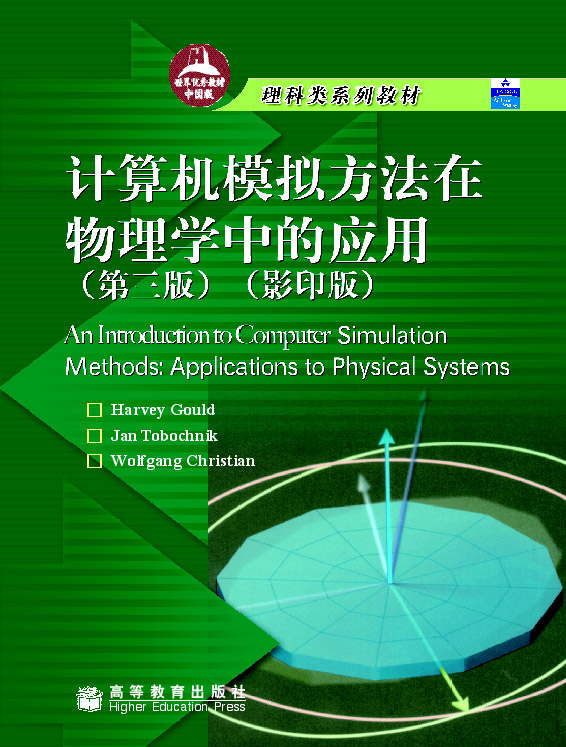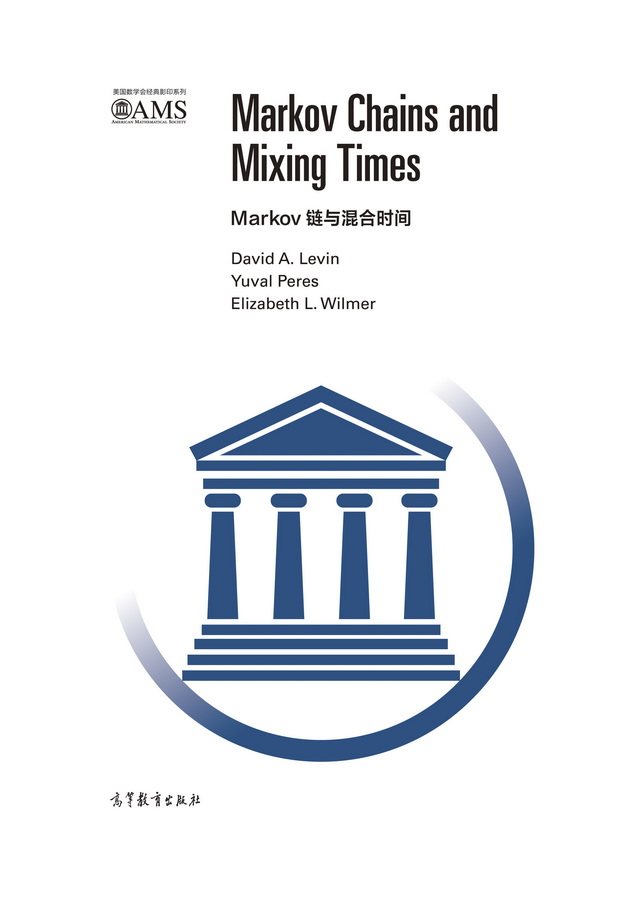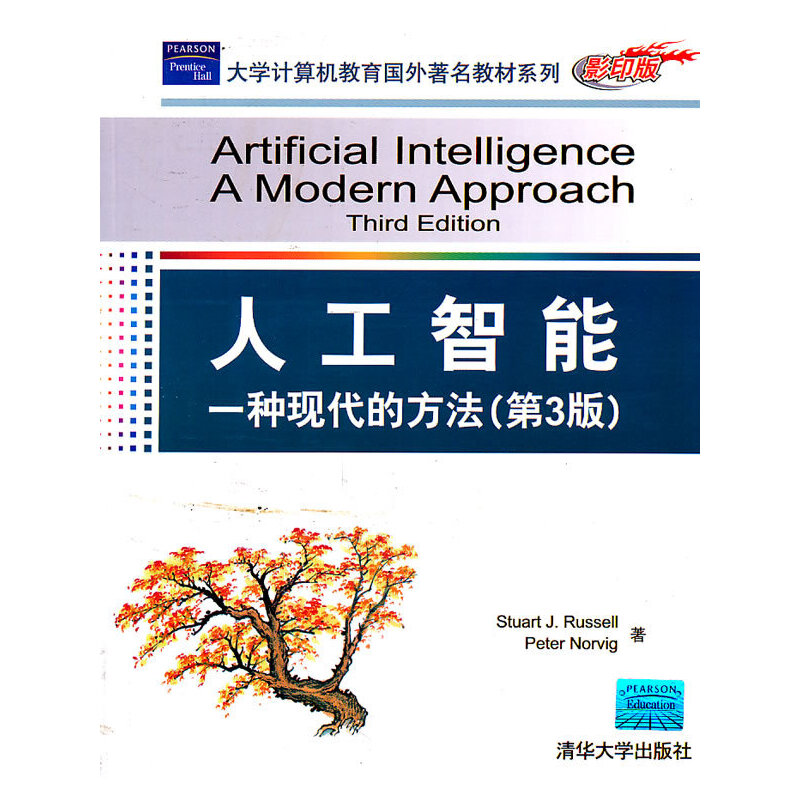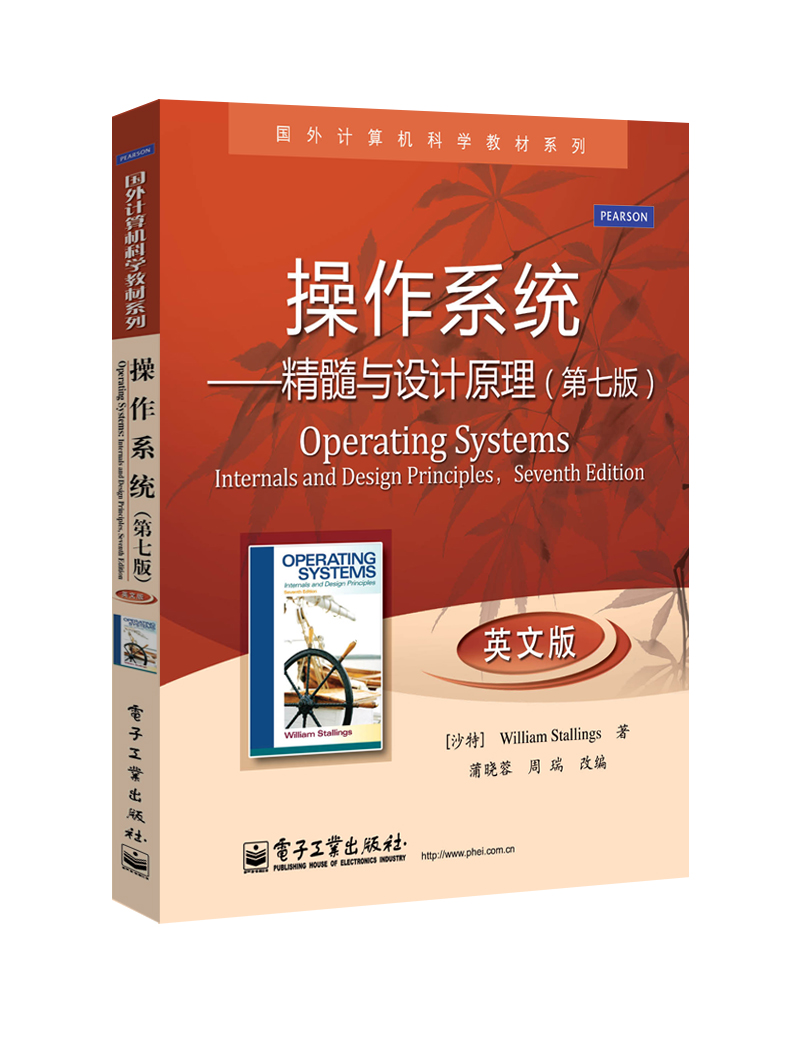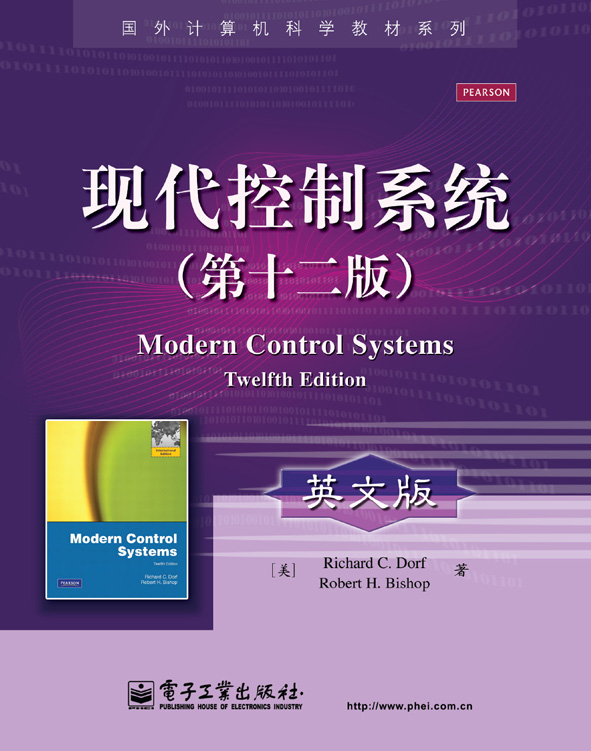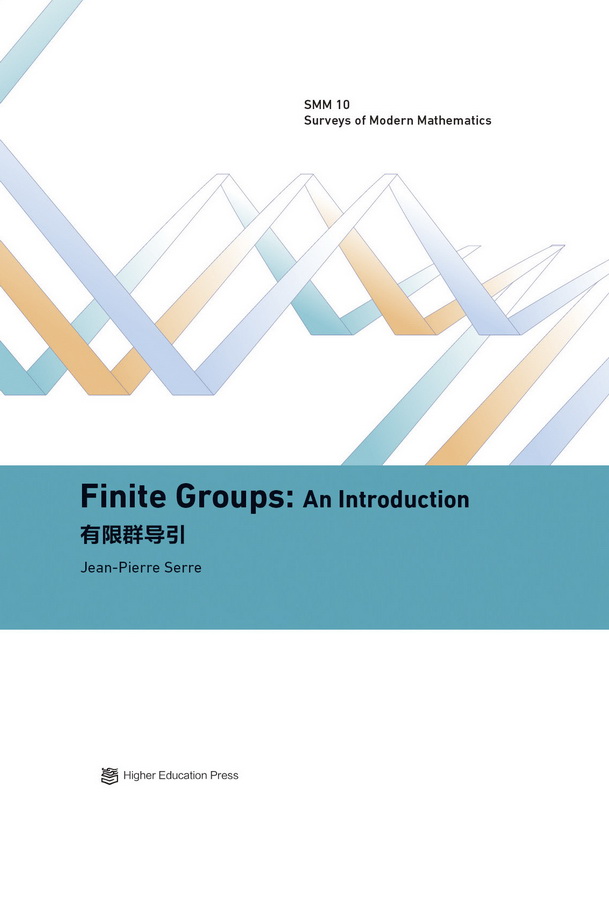计算机模拟方法在物理学中的应用(影印版)
作者: Harvey Gould
出版时间:2006-10
出版社:高等教育出版社
- 高等教育出版社
- 9787040199550
- 1版
- 20616
- 46250203-0
- 平装
- 异16开
- 2006-10
- 1330
- 796
- 理学
- 物理学
- O4-39
- 物理类
- 本科 研究生及以上
本书是在美国大学使用很广泛的一本经典的,讲解如何使用计算机进行物理学数字模拟的教材,该书为刚刚出版的第三版。该书不是简单的物理学研究中的数学方法的介绍,而更注重使用计算机模拟物理学问题中帮助学生更深刻的理解物理学,帮助学生在学习中了解和掌握使用计算机做物理学研究的一些基本手段,并学会如何根据具体的物理问题选择相应的研究方法。此外,还通过对具体的例子的讲解也为学习物理学的学生介绍了物理学广阔的应用天地。
同前两版版相比,第三版中的程序全部使用Java语言来编写,具有非常好的平台兼容性,实用性强。由于该书是通过计算机模拟讲解物理,因此对计算机编程的基础要求不高,读者都能在课程学习的过程中学习和掌握编程的工具及方法。除覆盖物理学的基本内容,例如光学、电动力学、相对论、刚体运动、量子力学等,该教材还涉及了物理学的一些比较前沿的领域,例如随机行走、混沌、分形、多粒子体系、复杂理论等,开阔了读者使用教材中介绍的方法的视野。
本书可作为高等学校物理类专业或其它理工类专业计算物理课程的教材或参考书,对于相关学科的研究人员也是一本有用的参考书。
1 Introduction
1.1 ImportanceofComputersinPhysics
1.2 TheImportanceofComputerSimulation
1.3 ProgrammingLanguages
1.4 Object-OrientedTechniques
1.5 HowtoUsethisBook
AppendixIA:LaboratoryReports
2 ToolsforDoingSimulations
2.1 Introduction
2.2 SimulatingFreeFall
2.3 GettingStartedwithObject-OrientedProgramming
2.4 Inheritance
2.5 TheOpenSourcePhysicsLibrary
2.6 AnimationandSimulation
2.7 Model-View-Controller
Appendix2A:ComplexNumbers
3 SimulatingParticleMotion
3.1 ModifiedEulerAlgorithms
3.2 Interfaces
3.3 Drawing
3.4 SpecifyingtheStateofaSystemUsingArrays
3.5 TheODEInterface
3.6 TheODESolverInterface
3.7 EffectsofDragResistance
3.8 Two-DimensionalTrajectories
3.9 DecayProcesses
*3.10 VisualizingThree-DimensionalMotion
3.11 LevelsofSimulation
Appendix3A:NumericalIntegrationofNewton'sEquationofMotion
4 OscillatorySystems
4.1 SimpleHarmonicMotion
4.2 TheMotionofaPendulum
4.3 DampedHarmonicOscillator
4.4 ResponsetoExternalForces
4.5 ElectricalCircuitOscillations
4.6 AccuracyandStability
4.7 Projects
5 Few-BodyProblems:TheMotionofthePlanets
5.1 PlanetaryMotion
5.2 TheEquationsofMotion
5.3 CircularandEllipticalOrbits
5.4 AstronomicalUnits
5.5 Log-LogandSemilogPlots
5.6 SimulationoftheOrbit
5.7 ImpulsiveForces
5.8 VelocitySpace
5.9 AMini-SolarSystem
5.10 Two-BodyScattering
5.11 Three-BodyProblems
5.12 Projects
6 TheChaoticMotionofDynamicalSystems
6.1 Introduction
6.2 ASimpleOne-DimensionalMap
6.3 PeriodDoubling
6.4 UniversalPropertiesandSelf-Similarity
6.5 MeasuringChaos
*6.6 ControllingChaos
6.7 Higher-DimensionalModels
6.8 ForcedDampedPendulum
*6.9 HamiltonianChaos
6.10 Perspective
6.11 Projects
Appendix6A:StabilityoftheFixedPointsoftheLogisticMap
Appendix6B:FindingtheRootsofaFunction
7 RandomProcesses
7.1 OrdertoDisorder
7.2 RandomWalks
7.3 ModifiedRandomWalks
7.4 ThePoissonDistributionandNuclearDecay
7.5 ProblemsinProbability
7.6 MethodofLeastSquares
7.7 ApplicationstoPolymers
7.8 Diffusion-ControlledChemicalReactions
7.9 RandomNumberSequences
7.10 VariationalMethods
7.11 Projects
Appendix7A:RandomWalksandtheDiffusionEquation
8 TeDynamicsofMany-ParticleSystems
8.1 Introduction
8.2 TheIntermolecularPotential
8.3 Units
8.4 TheNumericalAlgorithm
8.5 PeriodicBoundaryConditions
8.6 AMolecularDynamicsProgram
8.7 ThermodynamicQuantities
8.8 RadialDistributionFunction
8.9 HardDisks
8.10 DynamicalProperties
8.11 Extensions
8.12 Projects
Appendix8A:ReadingandSavingConfigurations
9 NormalModesandWaves
9.1 CoupledOscillatorsandNormalModes
9.2 NumericalSolutions
9.3 FourierSeries
9.4 Two-DimensionalFounerSeries
9.5 FourierIntegrals
9.6 PowerSpectrum
9.7 WaveMotion
9.8 Interference
9.9 FraunhoferDiffraction
9.10 FresnelDiffraction
Appendix9A:ComplexFourierSeries
Appendix9B:FastFourierTransform
Appendix9C:PlottingScalarFields
10 Electrodynamics
10.1 StaticCharges
10.2 ElectricFields
10.3 ElectricFieldLines
10.4 ElectricPotential
10.5 NumericalSolutionsofBoundaryValueProblems
10.6 RandomWalkSolutionofLaplace'sEquation
*10.7 FieldsDuetoMovingCharges
*10.8 Maxwell'sEquations
10.9 Projects
Appendix10A:PlottingVectorFields
11 NumericalandMonteCarloMethods
11.1 NumericalIntegrationMethodsinOneDimension
11.2 SimpleMonteCarloEvaluationofIntegrals
11.3 MultidimensionalIntegrals
11.4 MonteCarloErrorAnalysis
11.5 NonuniformProbabilityDistributions
11.6 ImportanceSampling
11.7 MetropolisAlgorithm
*11.8 NeutronTransport
Appendix11A:ErrorEstimatesforNumericalIntegration
Appendix11B:TheStandardDeviationoftheMean
Appendix11C:TheAcceptance-RejectionMethod
Appendix11D:PolynomialsandInterpolation
12 Percolation
12.1 Introduction
12.2 ThePercolationThreshold
12.3 FindingClusters
12.4 CriticalExponentsandFiniteSizeScaling
12.5 TheRenormalizationGroup
12.6 Projects
13 FractalsandKineticGrowthModels
13.1 TheFractalDimension
13.2 RegularFractals
13.3 KineticGrowthProcesses
13.4 FractalsandChaos
13.5 ManyDimensions
13.6 Projects
14 ComplexSystems
14.1 CellularAutomata
14.2 Self-OrganizedCriticalPhenomena
14.3 TheHopfieldModelandNeuralNetworks
14.4 GrowingNetworks
14.5 GeneticAlgorithms
14.6 LatticeGasModelsofFluidFlow
14.7 OverviewandProjects
15 MonteCarloSimulationsofThermalSystems
15.1 Introduction
15.2 TheMicrocanonicalEnsemble
15.3 TheDemonAlgorithm
15.4 TheDemonasaThermometer
15.5 TheIsingModel
15.6 TheMetropolisAlgorithm
15.7 SimulationoftheIsingModel
15.8 TheIsingPhaseTransition
15.9 OtherApplicationsoftheIsingModel
15.10 SimulationofClassicalFluids
15.11 OptimizedMonteCarloDataAnalysis
*15.12 OtherEnsembles
15.13 MoreApplications
15.14 Projects
Appendix15A:RelationoftheMeanDemonEnergytotheTemperature
Appendix1513:FluctuationsintheCanonicalEnsemble
Appendix15C:ExactEnumerationofthe2x2IsingModel
16 QuantumSystems
16.1 Introduction
16.2 ReviewofQuantumTheory
16.3 BoundStateSolutions
16.4 TimeDevelopmentofEigenstateSuperpositions
16.5 TheTime-DependentSchr6dingerEquation
16.6 FourierTransformationsandMomentumSpace
16.7 VariationalMethods
16.8 RandomWalkSolutionsoftheSchr6dingerEquation
16.9 DiffusionQuantumMonteCarlo
16.10 PathIntegralQuantumMonteCarlo
16.11 Projects
Appendix16A:VisualizingComplexFunctions
17 VisualizationandRigidBodyDynamics
17.1 Two-DimensionalTransformations
17.2 Three-DimensionalTransformations
17.3 TheThree-DimensionalOpenSourcePhysicsLibrary
17.4 DynamicsofaRigidBody
17.5 QuaternionArithmetic
17.6 QuaternionEquationsofMotion
17.7 RigidBodyModel
17.8 MotionofaSpinningTop
17.9 Projects
Appendix17A:MatrixTransformations
Appendix17B:Conversions
18 SeeinginSpecialandGeneralRelativity
18.1 SpecialRelativity
18.2 GeneralRelativity
18.3 DynamicsinPolarCoordinates
18.4 BlackHolesandSchwarzschildCoordinates
18.5 ParticleandLightTrajectories
18.6 Seeing
18.7 GeneralRelativisticDynamics
*18.8 TheKerrMetric
18.9 Projects
19 Epilogue:TheUnityofPhysics
19.1 TheUnityofPhysics
19.2 SpiralGalaxies
19.3 Numbers,PrettyPictures,andInsight
19.4 ConstrainedDynamics
19.5 WhatareComputersDoingtophysics?
Index

